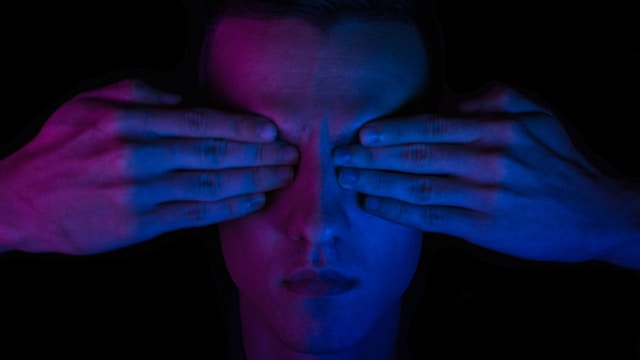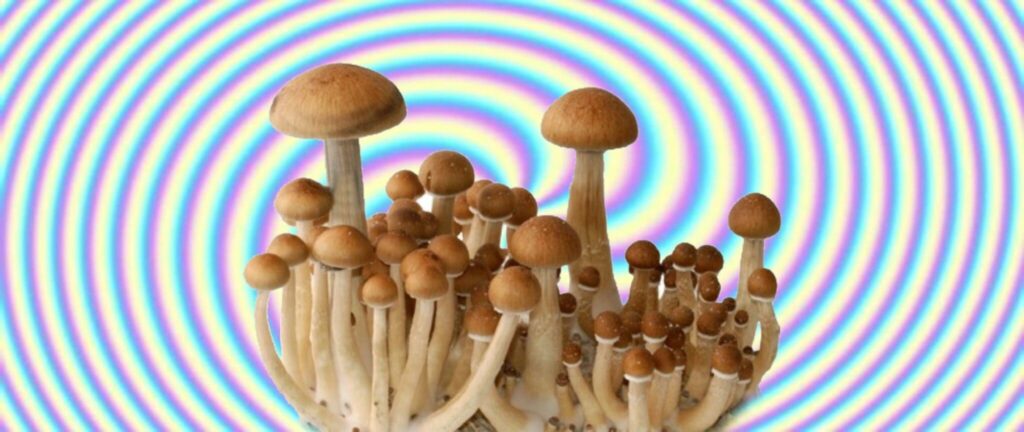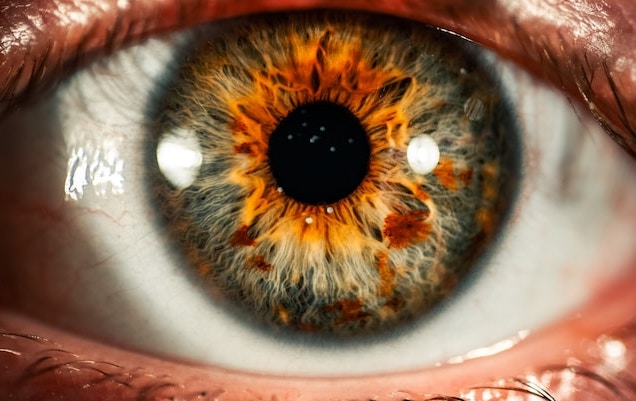The Causes of Color Blindness
Color blindness (also known as Color Vision Deficiency or CVD) tends to affect around 1 in 12 men, and 1 in 200 women. It is usually hereditary, often passed through the mother’s side. However, some people become color blind as a result of diseases such as multiple sclerosis or diabetes. Others develop the condition due to taking drugs and medications, or simply from aging. Currently there is no cure or treatment for the condition. However this could soon change, with the help of the most colorful of drugs: psychedelics.

Could Psychedelics Treat Color Blindness?
Yes, could it be possible to improve color blindness using magic mushrooms! At least, according to a recently published case study. In the study, published in Drug Science, Policy and Law, a team of researchers presented the case of a person with red-green color blindness who reported positive effects on his condition after taking magic mushrooms. Red-green color blindness is the most common type of CVD, and is often inherited. The researchers wrote:
“Recent survey data indicate that some people report long-term improvement in color vision deficiency (CVD), also known as color blindness, following use of psychedelics such as lysergic acid diethylamide (LSD) and psilocybin”

A New and Exciting Case Study
The specific case the researchers reported on was the self-experimentation of a 35 year old man with red-green CVD. He had been diagnosed 5 years before. Prior to ingesting magic mushrooms, he self-administered the Ishihara test, the clinical color vision test, scoring 14. In the Ishihara test, a score of 17 or above indicates normal color vision.
He then took 5g of magic mushrooms, and 12 hours later conducted the Ishihara test again, continuing consistently for the next four months. The results were fascinating. 12 hours after taking psilocybin his score had improved to 15. 24 hours later the score had reached 18 — a normal color vision result. By day 8 it had peaked at 19. After 4 months his score was steady at 18.
The researchers wrote;
“This case report suggests a single use of psilocybin may produce long-lasting partial improvements in CVD, despite this condition typically resulting from a genetic defect… This raises important questions about the possibility of psilocybin inducing durable alterations in visual processing in some people.”
Psilocybin Affects Brain Activity, Not the Eye Itself
Despite significant improvement the man never got a perfect score on the test. His condition is genetic, and however magic psilocybin mushrooms are, they cannot change DNA. The researchers do have theories on what led to his improvement however. It is not coming from the retina of the eye itself — rather the brain. The researchers presented the theory that the magic mushrooms are affecting the activity of the brain, creating “new neural connections between cortical regions that link new photisms to pre-existing concepts of colors, thus facilitating a new color experience.”

Though super exciting, there are some limitations to the study, such as that it was self-reported and self-administered. However, the results are still significant for the future of color blindness treatment and therapy. The researchers concluded;
“…the underlying mechanisms that subserve psilocybin-induced improvement in color perception in people with CVD should be investigated… Future research in this area should determine whether psilocybin-induced improvement in CVD occurs in more severe cases of CVD, explore the relationship of psilocybin dosage to CVD improvement, and investigate the underlying mechanism of this curious phenomenon.”
Previous Study Supports These Findings
This is not the first time that psychedelics have been eye-balled as a potential treatment for color-blindness however. A report published in 2020 in Drug Science, Policy and Lawn also suggested that psychedelics such as LSD and psilocybin from magic mushrooms, could improve the symptoms of color blindness.
Researchers JEC Anthony and colleagues had previously received anecdotal reports from participants in studies who described changes and/or improvements in their color blindness after the use of psychedelics. Inspired by this, the researchers decided to analyze the results of a large-scale annual drug survey, focusing on the 2017 edition of the Global Drugs Survey (GDS).
Half of Those Surveyed Saw Results
The survey had included a question asking color blind participants to report whether their color vision had altered after using a psychedelic. The question produced 47 usable results for the researchers. The responses were split almost in half. About 24 of the participants said they saw no change or alteration. However, 23 said they did experience improvements. The drugs most commonly cited to have caused this improvement were psilocybin and LSD, although a few other drugs were name-checked too.
Although the responses to analyze were relatively few, the researchers stated that there were enough to suggest that the recreational usage of psychedelic drugs can improve color blindness for some users. Here too there was evidence that these improvements in color blindness extend beyond the immediate period of intoxication — i.e after the ‘high’. Around 39% of those who experienced the vision alterations reported them persisting anywhere from 3 days to some years after usage.
“… Facilitating a new colour experience and improving colour blindness.”

In the study Anthony and his colleagues stated;
“Psychedelics may facilitate the experience of an expanded spectrum of colours… In the excited psychedelic state, new communication between cortical regions may link new photisms to pre-existing concepts of colours, thus facilitating a new colour experience and improving colour blindness.”
The findings of this study were again limited. There were not enough details to differentiate between the different types of color blindness participants experienced. Nor were the description of vision changes particularly detailed either.
Both of these studies show great potential for psychedelics like magic mushrooms, to act as a treatment for color blindness. It is only the legal barriers facing the study of psychedelics that means this research is not much further along, considering all the promise on display. With the powers that be finally beginning to let psychedelic study flourish, we are sure to see more concrete results very soon.
Could those who live with color-blindness soon be having their Oz experience….? Stay tuned.





